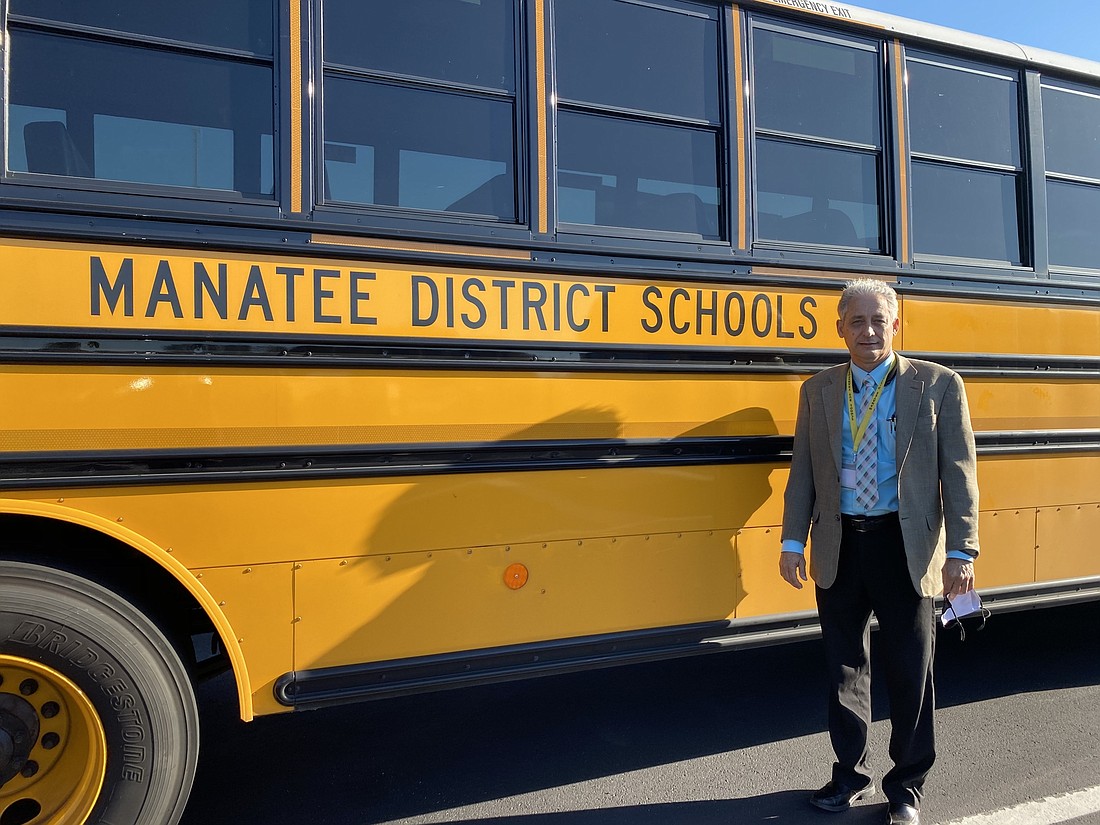- July 26, 2024
-
-
Loading

Loading

The School District of Manatee County is hoping to make another move toward becoming more environmentally friendly with the possibility of an electric bus transporting students.
The district applied for a grant that would cover 75% of the cost for an electric bus through the Florida Department of Environmental Protection’s Electric Bus Project.
If approved, the district would receive $393,043 for the bus. The total cost of the bus is $524,057.
Manatee County is among 23 counties across the state that are eligible for the grant because the Florida Department of Environmental Protection considers them air quality priority areas.
“It could be an exciting adventure, a great learning experience and possibly the beginning to the contribution of cutting pollution in this area,” said Gary Sawyer, the director of transportation and vehicle maintenance for the district.
According to the Environmental Protection Agency, diesel exhaust from school buses idling pollutes the air in and around the bus, which contributes to ozone pollution, acid rain and climate change.
The electric bus would have zero emissions and would need to be plugged in to charge rather than filled up with gas.
“Electric could be the wave of the future, not only in school buses and transit buses,” Sawyer said. “I mean we’re already seeing it in cars like a Tesla.”
Kevin Chapman, the director of strategic and district initiatives for the school district, said that as the largest employer in Manatee County, the district feels a responsibility to the county, its citizens and the environment to become as energy efficient and sustainable as possible.
The district formed a sustainability committee, which consists of district employees and community leaders, to find ways for the district to become more energy efficient and sustainable.
When the committee saw the Electric Bus Project grant, Chapman said the committee believed the district needed to take advantage of the opportunity and apply for the grant.
“It will provide not only a way to see if an electric bus saves money, is efficient and fits well into the school system, but also it’s a learning vehicle for our STEM programs, our vocational programs and our programs at Manatee Technical College,” Chapman said. “It could get a lot of use both on the educational side and on the operational side. We thought, ‘This is a no-brainer.’”
Chapman said the bus could be an opportunity for MTC students to learn about the mechanics of an electric bus and how to repair it. The bus could also be incorporated into Palm View Elementary School’s WOZ Ed Pathway program, which focuses on coding, the engineering design process, drones, cyber security and mobile development.
If the district’s grant application is approved, the bus could potentially serve three schools on one route similar to the diesel buses currently in the district’s fleet.
Most of the buses would run a route in the morning and afternoon for a high school, middle school and elementary school on any given day, Sawyer said.
Sawyer said the district has yet to decide what route the bus could run because it depends on the bus’s range and miles that it will travel before it has to be charged. Sawyers said manufacturers believe an electric bus could drive roughly 120 miles before needing to be charged, but other factors can lessen the number of miles a bus could travel. Other factors include how often the air conditioning is used and how long the bus is idling.
The electric bus isn’t the first time the district has tried to introduce an energy efficient bus into its fleet. In 2007, the district was the first in the country to add two hybrid buses to its fleet, but within two years, maintenance issues caused the program to be discontinued.
Charlie Kennedy, a school board member, has been an advocate for the district becoming more green and is excited at the possibility of being one of the first counties to have an electric bus.
“This is just the way we have to go,” Kennedy said. “It’s just a matter of time. It’s not like, ‘Oh, well, this might be something in the future.’ This is the future of transportation. When you look at the cost-benefit analysis, the electric vehicles cost you more up front, but the savings down the road are undeniable.”
Kennedy hopes that in the next five to 10 years, the district will only be purchasing electric vehicles.